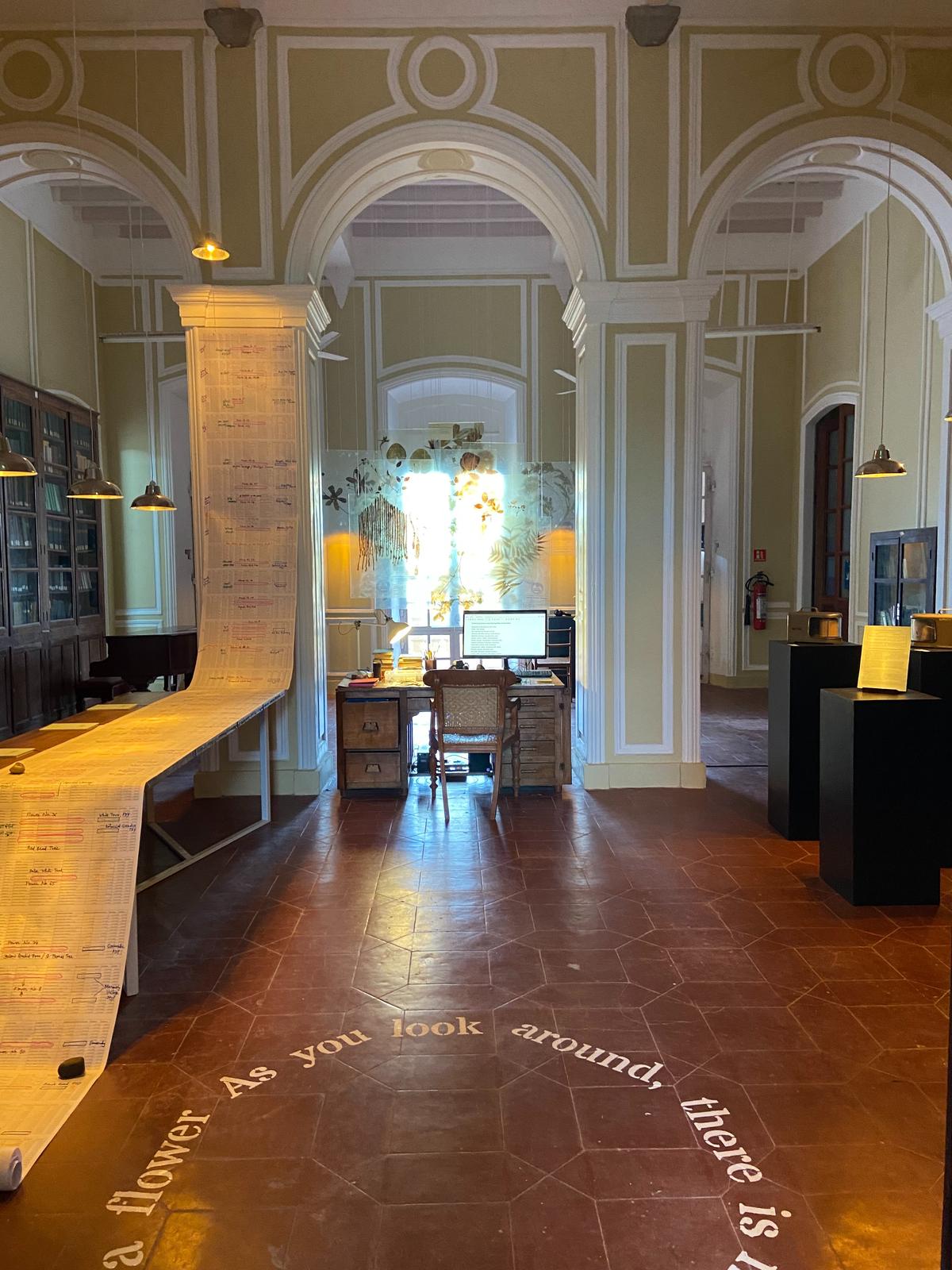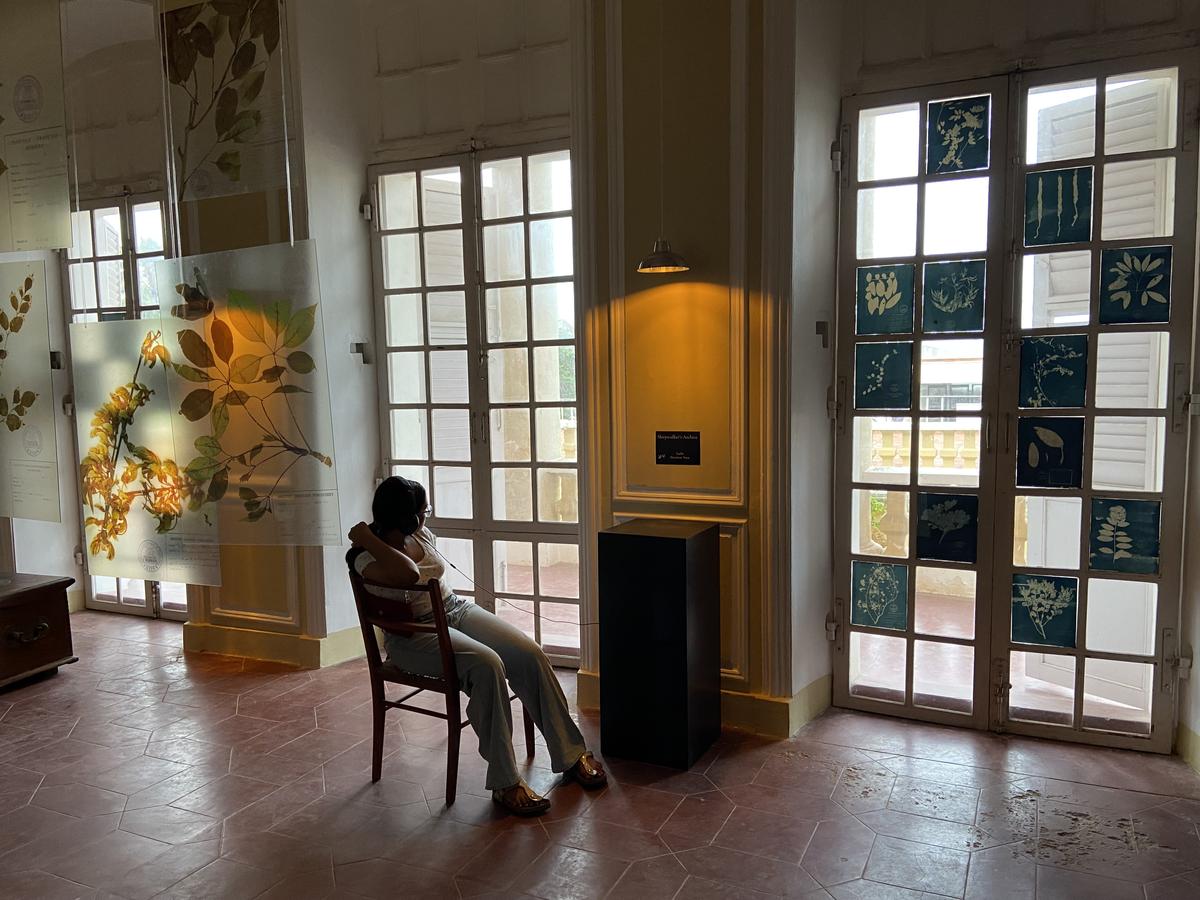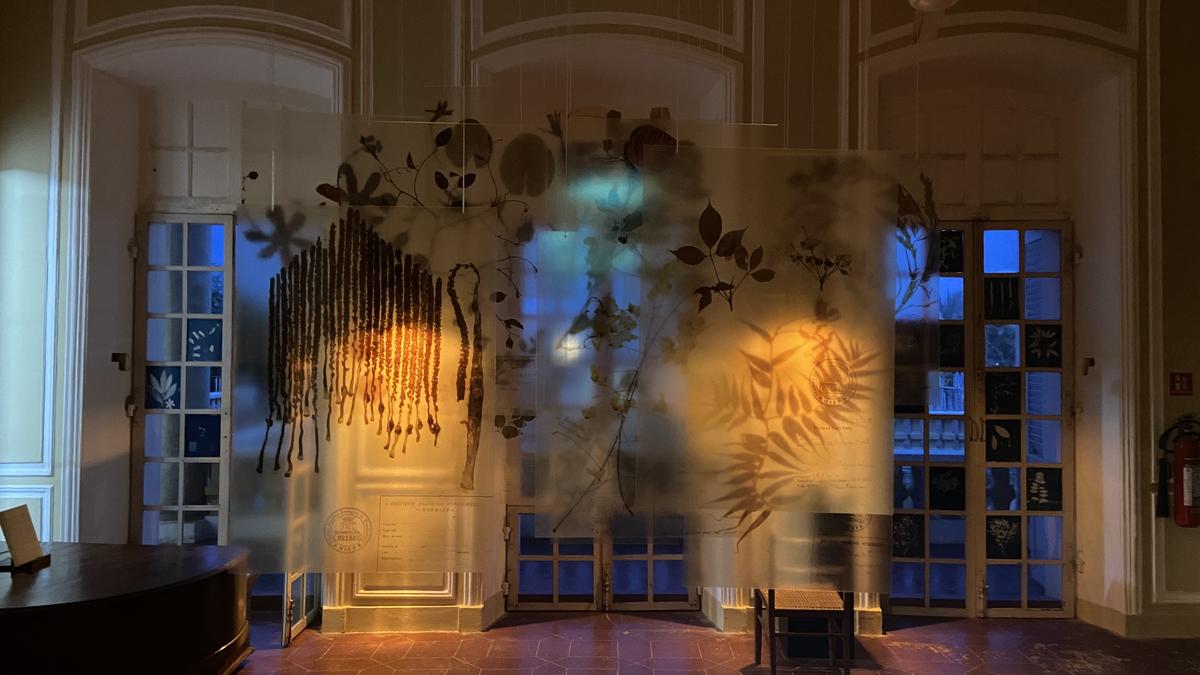A view from the Sleepwalker archives | Photo credit: Karthik Subramanian
The stairs leading up to the first floor of the French Institute of Pondicherry (IFP) today tell a story: in the literal sense. Each stair has a sentence that prompts one to pause and ponder. It is only a foreshadowing of what is about to happen once you enter the very familiar building with the yellow façade, where inevitably holiday photos are taken. It sets the context for the immersive world that awaits inside.
The Sleepwalker Archives, a multidisciplinary exhibition spread across the first floor of the building, is a delightful mix of mediums – here text, archival images, film and even physical objects come together in an attempt to reinterpret the existing wealth of archival material that the institution is so proud of.

Curators Karthik Subramanian, Devarati Chakraborty and Sujit George were selected to engage with IFP’s archives 15 months ago as part of a project initiated by Bengaluru-based India Foundation for the Arts (IFA). The archives are threefold; one has 1,30,000 to 1,40,000 images from south India, mainly Tamil Nadu, since the 1950s that include depictions of south Indian cultural aspects such as temple images and documentation of Puducherry. The second is the Stars Collection, a digital documentation of images and materials from photo studios across the state, while the third is the research institute’s exceptional herbarium collection with 25,000 plant specimens, says the curator.

A view from the Sleepwalker archives | Photo credit: Karthik Subramanian
Karthik says, “It was interesting that each one of us was looking at the same material with completely different perspectives and starting points. We kept talking about our preoccupations and at one point thought it would be a good idea to put our individual outputs together. Then it grew bigger.” “We were just trying to make sense of the vast amount of information we had to interact with,” says Devariti.
Then came the idea of creating a fictional space. The narrative is carried forward by a fictional personality whose identity is still not defined. “The story begins with the stairs leading up to this space. As people go up, they start reading a person’s reflection on the need for documentation and archiving,” says Karthik. But not necessarily in a systematic way. They are presented with possibilities to document scientific material by creating a space for play and whimsy.
Clues and surprises jump out at each other in every corner. Objects like the many wooden cabinets at the institute are also part of the display. “We have refilled the shelves with some poetic keywords, which are not usually used to categorise the material here,” adds Karthik. The shelves have 66 drawers, with accordion-folded images that pop out and single images with text. Some of the tools and instruments used for herbarium research are also part of the narrative display.

A visitor to the show | Photo credit: Karthik Subramanian
Another installation is a 10-metre-long Excel scroll that hangs like a curtain containing a meticulous list of flora specimens from the collection. What makes it interesting is an unexpected comparison with a Sangam poem. Karthik explains, “There is a Sangam poem named KurinsipattuThere is a sudden moment of disorientation, where 99 flowers are listed one after the other. It is a kind of geographical compendium.” The central, fictional character attempts to find the names in the list. The idea is to enable a seamless interaction between ancient poetry and contemporary scientific databases. The display also features transparent prints of archival images of flowers hanging in the space. An audio booth with a collection of Sangam poems in English and Tamil also forms the narrative, apart from a fictional film of Karthik.
“What I enjoyed most was how it made the reader more curious about places,” says Devarati. “There is a constant search for absence. That is the spirit of this place. Everything is filled with clues that help create this character in one’s mind,” adds Karthik.
The Sleepwalker Archives is on display at the French Institute of Pondicherry, White Town, Puducherry until May 31.
